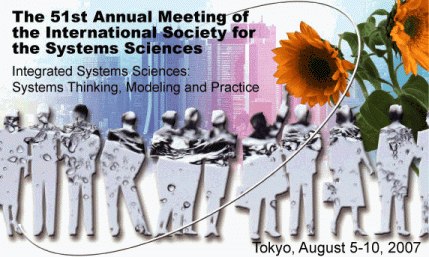Integrating Susteinability Practices Using the Viable System Model
Keywords:
Viable System Model, Sustainability, Team SynterityAbstract
This paper represents an effort to ecplore the use of Stafford Beer's Viable System Model to design human communities that foster adaptation to criteria of sustainability in our natural and social environments. With the projected rise in sea level and other changes that may accompany warming temperatures, it seems probable that many communities, even some large cities, will have to be abandoned and their populations relocated. This difficult circumstance could create tens of millions of climate change refugees and be met with the failure and incompetence that characterized the response to Hurricaine Katrina or it could provide an opportunity to rebuild in a manner that combines a high quality of life with a low impact on the environment. Using the framework of the VSM, three levels of recursion will be explored: the household, the neighborhood and the city. It will be possible to draw on lessons learned about building and maintaining cities in different climates and under different conditions over the centuries and from the construction of 'new towns' in the past fifty years. It has been characteristic of communities that regularily endured environmental challenges to have fostered means of collaboration and cooperation to address them and to constrain competition within bounds that did not threaten their common survival. There is no shortage of ideas and designs that could be applied but there is not yet the political and social infrsastructure or the political will to implement them. Steps taken in this direction might help coalesce the necessary political will to begin planning or to act to attenuate its impact. The following are proposed as guidelines under the VSM. The community and the city's external relationships with the surrounding natural, social and economic environments should be such that they can support themselves while avoiding endangering their own survival or that of their surrounding environments. Their internal operations should be such that an adequate quality of life is available to everone from the most dependent members of its socity to the most productive. They should pursue these ends with a view to maintaining a balance between collaboration/symbiosis and competition with the fewest restrictions on the autonomy of members consistent with the other guidelines. The Viable System Model cam be both a teplate for design and a framework for discussion of what usutainable communities in a time of climate change might look like. Such discussions would be facilitated by group processes such as Beer's Team Syntegrity process that he invented as a companion to the VSM. The process provides a whole system, high variety structure that gives equivalent status to each participant and viewpoint. This high level of communication will help to provide the cohesiveness that is needed when sacrifices must be made and hardship shared in order to achieve a new equilibrium with the environment.Published
2007-07-31
How to Cite
Leonard, A. (2007). Integrating Susteinability Practices Using the Viable System Model. Proceedings of the 51st Annual Meeting of the ISSS - 2007, Tokyo, Japan, 51(2). Retrieved from https://journals.isss.org/index.php/proceedings51st/article/view/597
Issue
Section
Cybernetics

